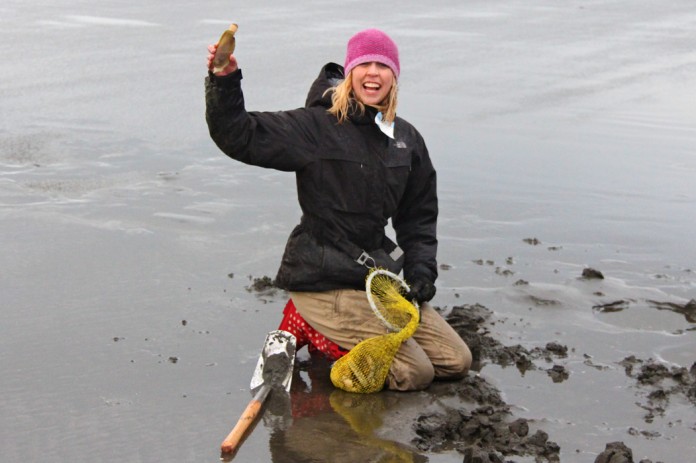Submitted by The Washington Department of Fish and Wildlife
Washington recreational razor clam harvest opener for the first portion of April will proceed. Below are the opening dates, time of the evening low tides and the beaches that are included:
- April 3, Sunday, 4:13 p.m.; 0.5 feet; Long Beach
- April 4, Monday, 5:04 p.m.; 0.1 feet; Long Beach
- April 5, Tuesday, 5:51 p.m.; 0.0 feet; Long Beach
- April 6, Wednesday, 6:36 p.m.; 0.0 feet; Long Beach
- April 7, Thursday, 7:07 a.m.; -0.6 feet; Long Beach, Copalis, Mocrocks
- April 8, Friday, 7:54 a.m.; -1.1 feet; Long Beach, Copalis, Mocrocks
- April 9, Saturday, 8:42 a.m.; -1.3 feet; Long Beach, Copalis
- April 10, Sunday, 9:32 a.m.; -1.2 feet; Long Beach, Mocrocks
- April 11, Monday, 10:23 a.m.; -0.9 feet; Long Beach
- April 12, Tuesday, 11:19 a.m.; -0.4 feet; Long Beach
Please note: For the weekend of April 9 and 10, Copalis ONLY is open on Saturday and Mocrocks ONLY is open on Sunday. Tribal diggers will be harvesting on the days these beaches are not open – so please be sure you are on the right beach each day!
Copalis extends from the Grays Harbor north jetty to the Copalis River, including Ocean Shores, Oyhut, Ocean City and Copalis areas.
Mocrocks extends from the Copalis River to the southern boundary of the Quinault Reservation near the Moclips River, including Iron Springs, Roosevelt Beach, Pacific Beach and Moclips.
Long Beach extends from the Columbia River to Leadbetter Point and Seaview, Cranberry, Klipsan , Ocean Park and Oysterville area.
Diggers on the northern portions of Long Beach must stay out of the upland portions of the beach clearly marked with a long line of white PC poles and signs. These areas are critical nesting areas for snowy plovers. Having diggers (and their dogs) stay out of these areas are important to help us protect these birds. Please see the attached flyer for more details.
Twin Harbors Beach remains closed. This area extends from Willapa Bay to the Grays Harbor South Jetty. Toxin levels at Twin Harbors Beach remain above the threshold (20 parts per million) set by public health officials. Razor clams at Twin Harbors had the highest levels of domoic acid during the peak of the harmful algae bloom in 2015, as a result it is taking longer for clams there to rid themselves of the toxin.
A description of each beach and a map can be found here.
For details visit us online.

















































